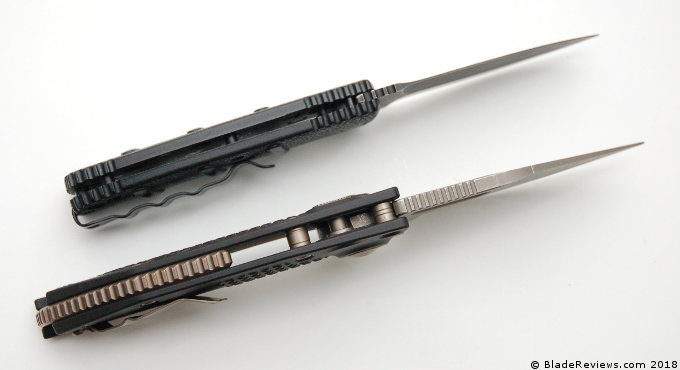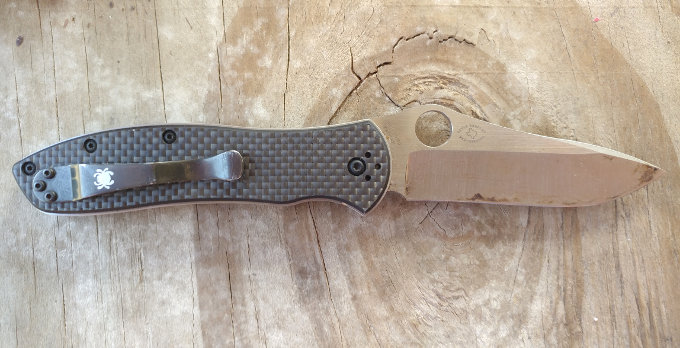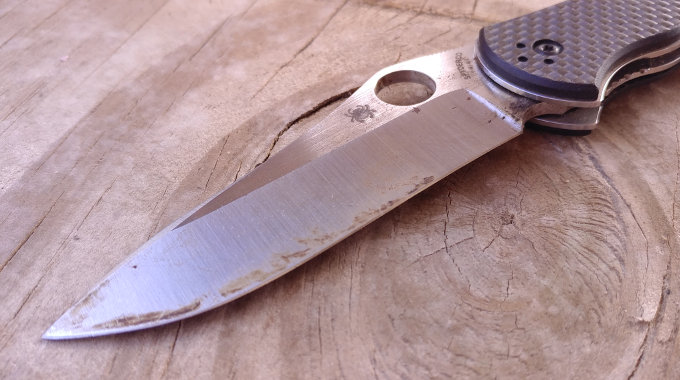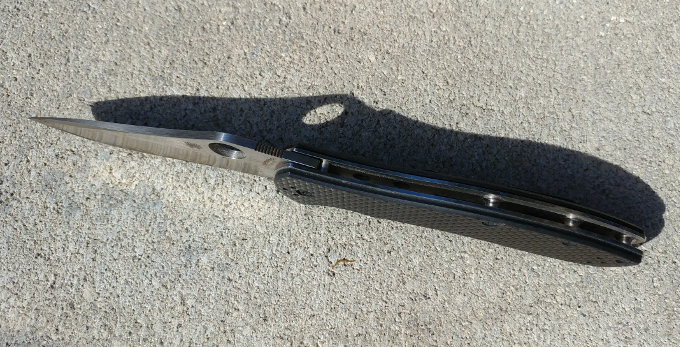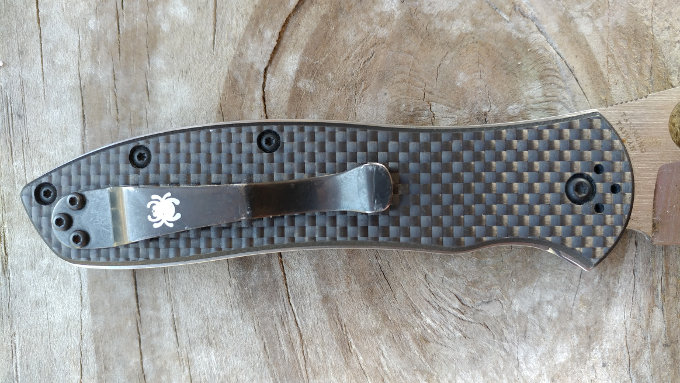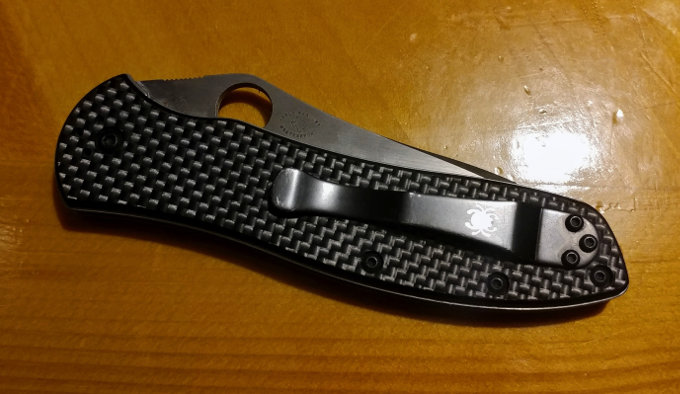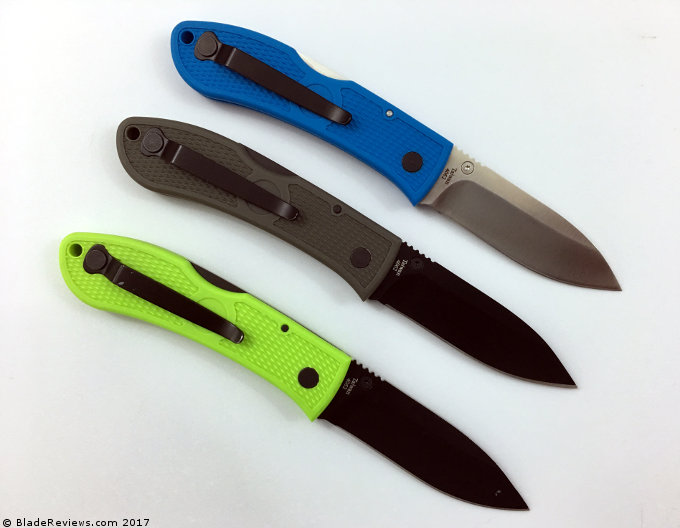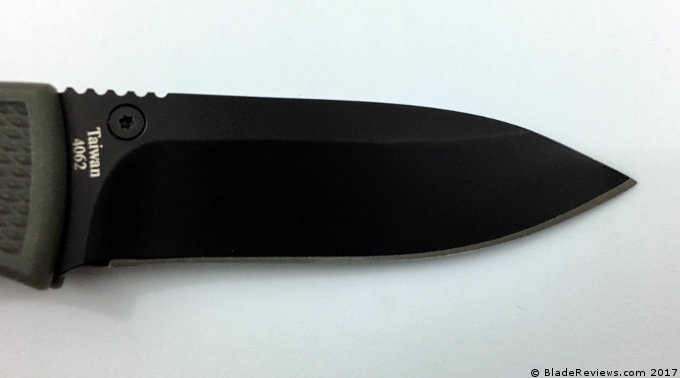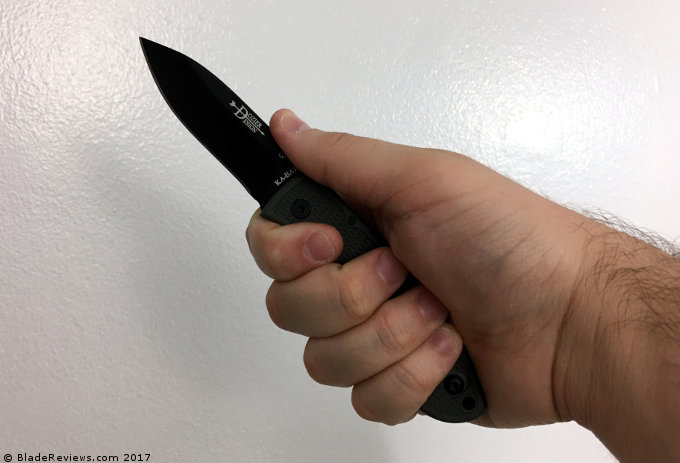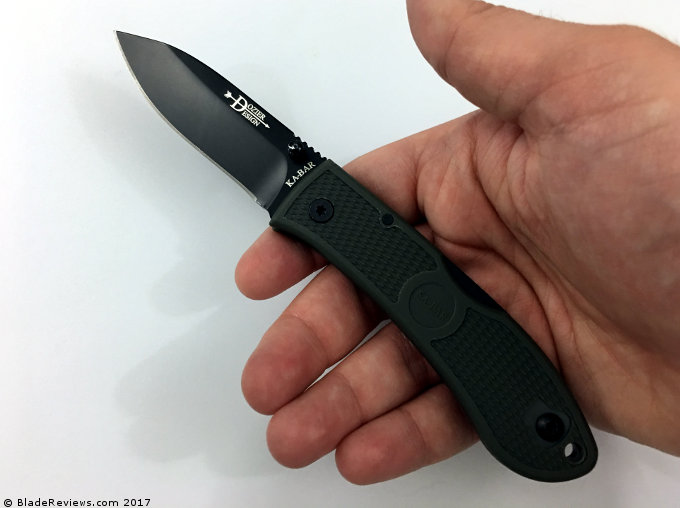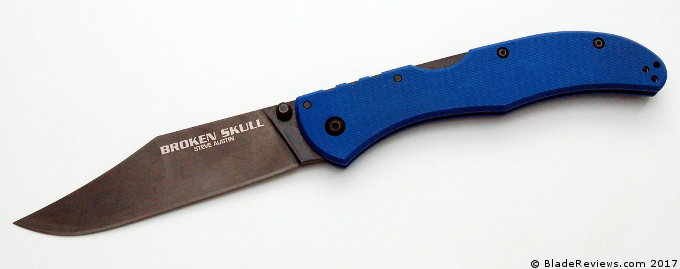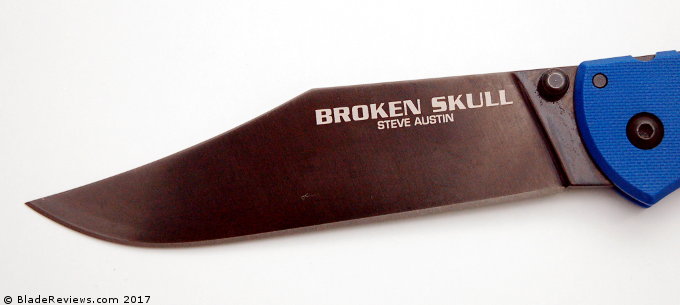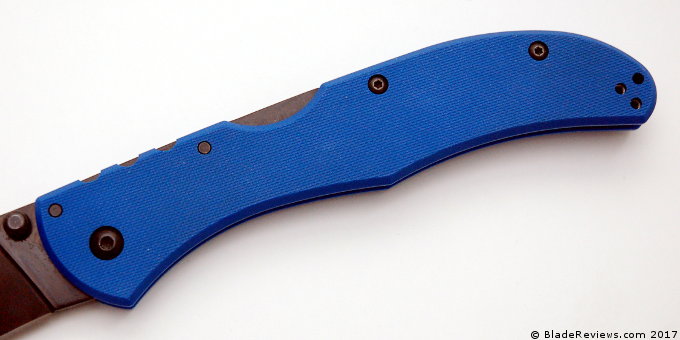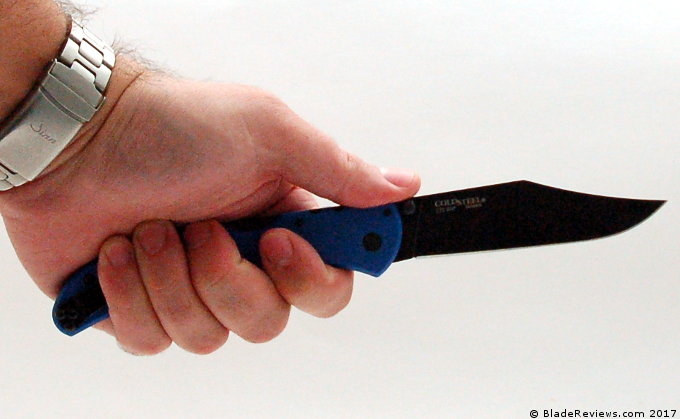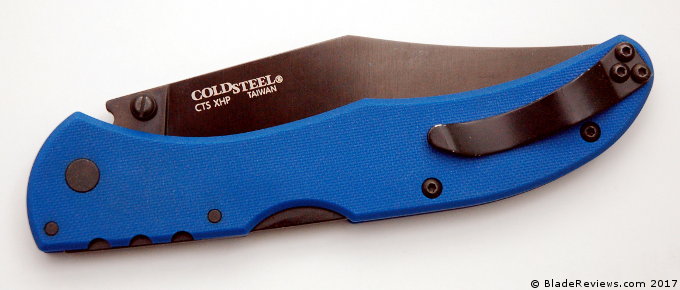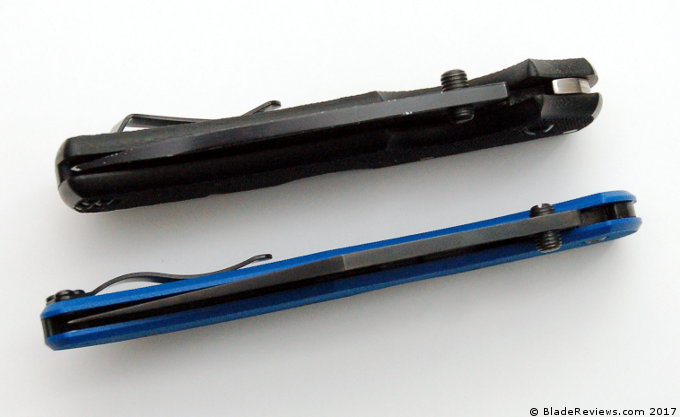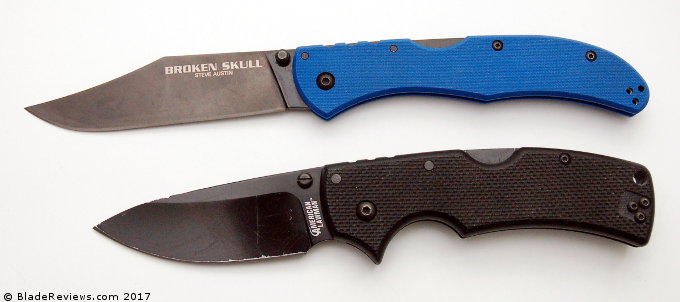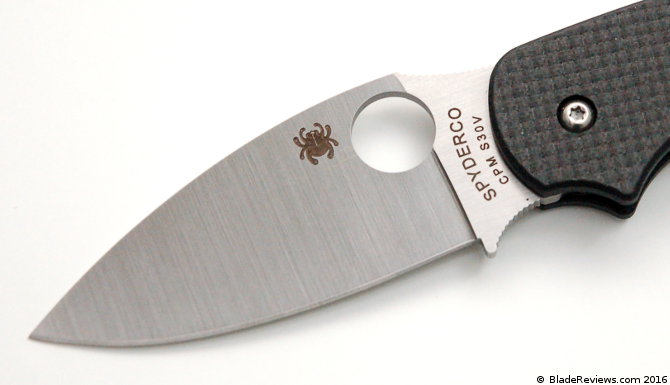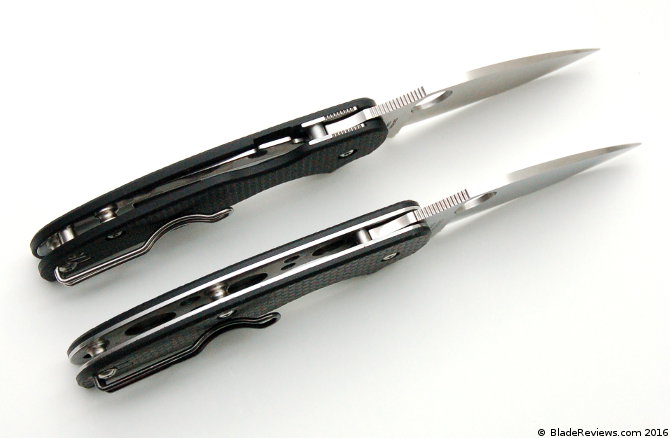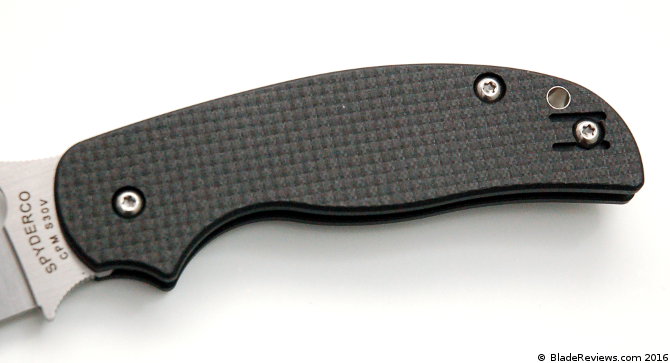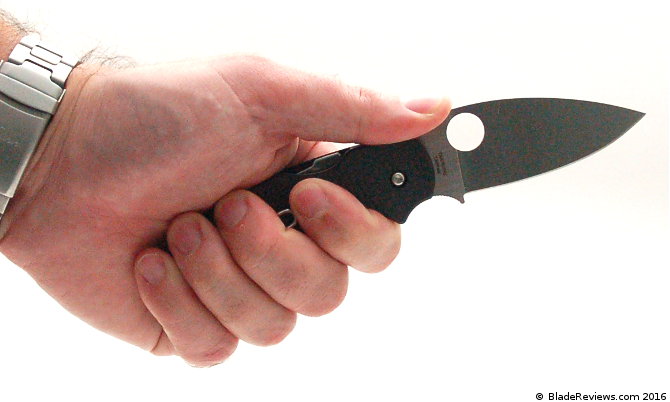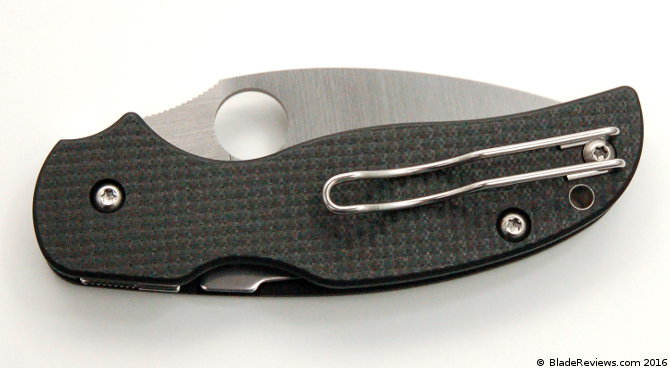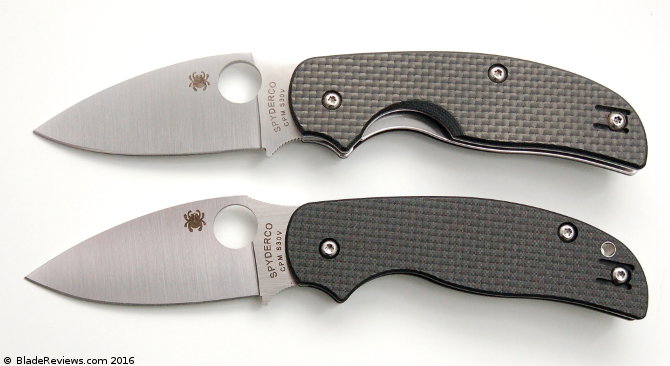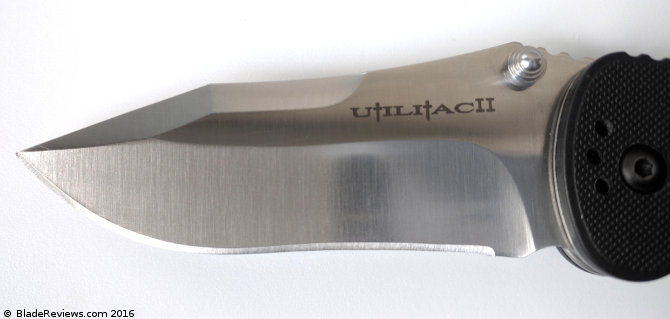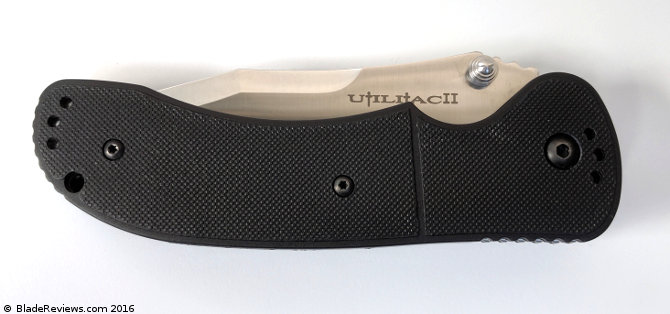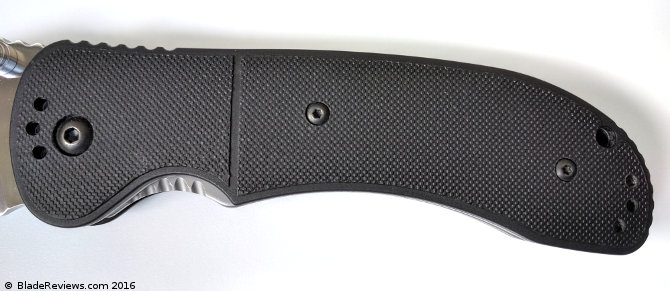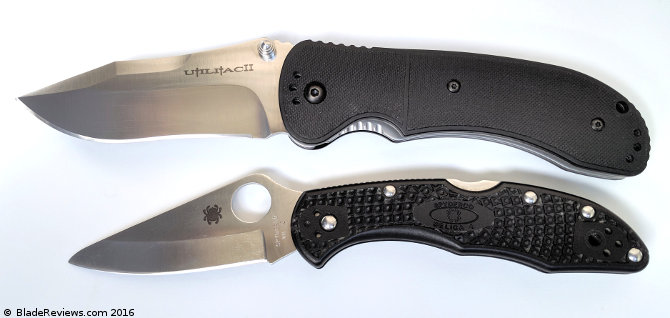My recent review of the Microtech Stitch ignited my interest in automatic knives. I think it’s easy to see why. The Stitch is a beautiful and unique knife. It is also a $400 knife. That’s a significant chunk of change. I wanted to check out a more affordable segment of the market.
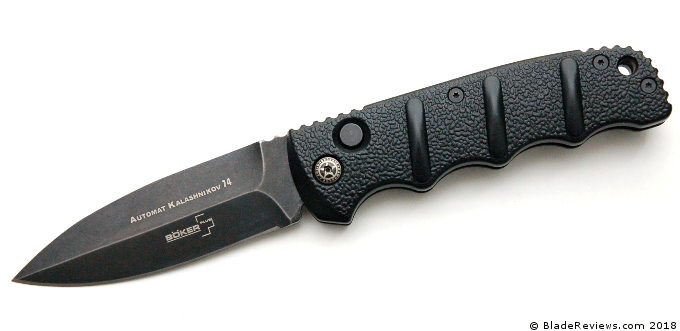
Buy the Boker Kalashnikov at BladeHQ
The Boker Kalashnikov is an easy knife to consider in the budget auto category. It has been a best seller for BladeHQ for years. But for whatever reason I’ve been ignoring it. Maybe it’s the Kalashnikov schtick. Not really my thing. That combined with it being an auto dropped it far down on the list of knives to review.
But lets check it out. For $40, its about 10% the cost of the Microtech Stitch, so it will be interesting to compare the two. Lets see how it holds up.
General Dimensions and Blade Details
The Kalashnikov, which is sometimes referred to as the 74 or “AK-74″, has an overall length of 7.625″, a 3.25” blade, and it weighs 3.70 ounces. It’s a good size for EDC, provided that it’s legal for you to carry an automatic knife where you live. In many parts of the world it’s not legal to carry an automatic knife, so check your laws carefully before pocketing the Kalashnikov in public.
Also, it’s worth mentioning that this knife was designed by Dietmar Pohl of Pohl Force fame. I didn’t realize this until I sat down to write the review. Good to know.
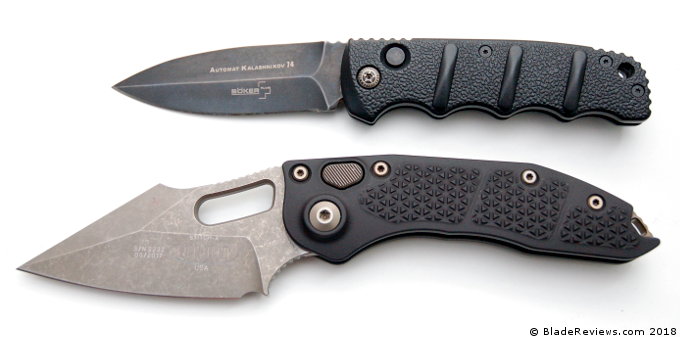
Boker offers this knife in a variety of blade shapes and colors. I happened to get the spearpoint bladed version with the BladeHQ exclusive “Smokewash” finish. My knife has been evenly ground. The blade stock is right at 3mm thick. It gets reasonably thin behind the edge, and has a fine tip. The edge has been applied evenly, and the smokewash finish has an attractive distressed look. All in all, the blade has been well done.
If a spearpoint isn’t your thing Boker offers the knife with a drop point, tanto, or clip point blade. There are probably other versions. This has been a successful model for Boker and like the Kwaiken it has been released in a myriad of configurations over the years.
The Ak-74 comes in AUS-8 blade steel. This seems to be their standard offering for this model, although you may be able to find different steels in various limited releases. Those who have been around the budget knife market for a minute know that AUS-8 is a softer steel. Edge retention isn’t great, but it does take a nice edge and is easy to sharpen. For $40 I’m not complaining. I think AUS-8 is appropriate given the price point.
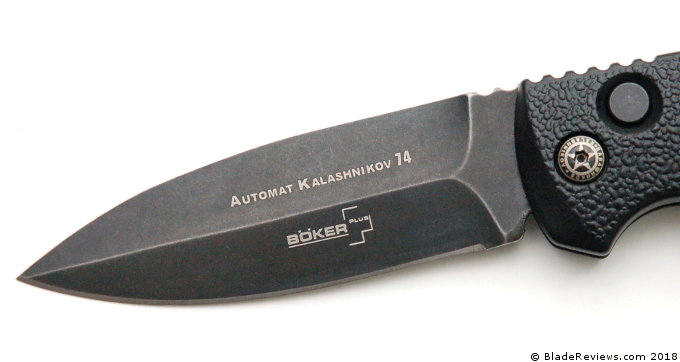
In practice the Kalashnikov held up to all the little EDC chores I put it through. This includes the usual stuff like opening mail, breaking down boxes, and cutting fruit. This sort of stuff is no problem for the Kalashnikov. When the edge eventually dulls a couple swipes on my Sharpmaker or DMT stones bring the edge back without issue. This is an easy steel to sharpen.
Handle, Ergonomics, and Pocket Clip
The AK-74 features an anodized cast aluminum handle. The handle is contoured and heavily textured. It has 3 bands running down it, designed to mimic the magazine of an AK-74 rifle. The handle pieces are held together by torx hardware and 3 stand offs, providing a decent view into the guts of the knife. There’s not much to see. Just more black aluminum. The hardware is black, save for the pivot which has a little extra decoration on it.
All the parts line up. There are no sharp edges. When I shake the knife it doesn’t rattle. The handle appears to be dialed in.
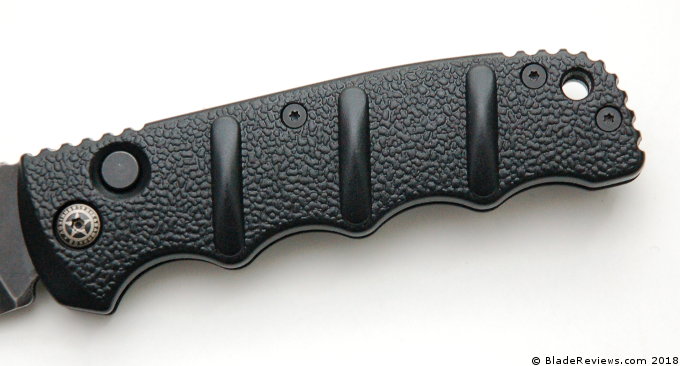
The Kalashnikov has decent ergonomics. The first thing I noticed are the 3 finger grooves. Typically these can cause hot spots, but I had no issues with my size “XL” hands. There is a row of jimping on the spine of the blade and back of the handle. It works well. It’s on the aggressive side, but for basic EDC tasks it didn’t bother me.
The handle itself is loaded with texture. It has a faux stippled look to it. Kind of like a Pebble Tec swimming pool but even milder. All said the ergonomics on this knife aren’t bad. It’s not the world’s most comfortable knife, but it’s not offensive either.
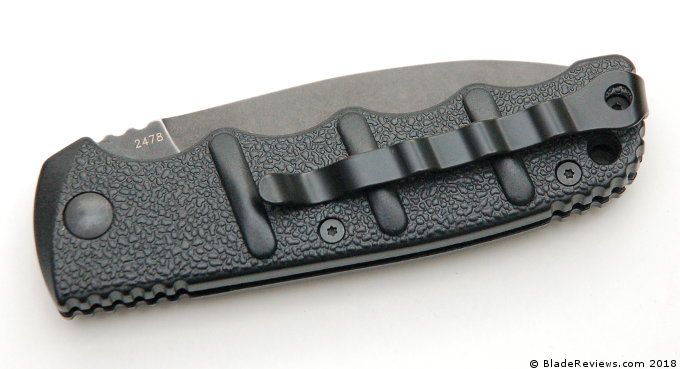
The pocket clip is a large black deep carry pocket clip. It carries the same motif as the handle with 3 ridges. I’m not a huge fan of the styling, but beyond that this is a functional and discreet pocket clip. It buries the knife in your pocket, and the good spring retention keeps the knife tucked away.
In practice the Kalashnikov carried as I would expect it. At a little under 4 ounces the knife is relatively small and light. For the most part I didn’t notice it.
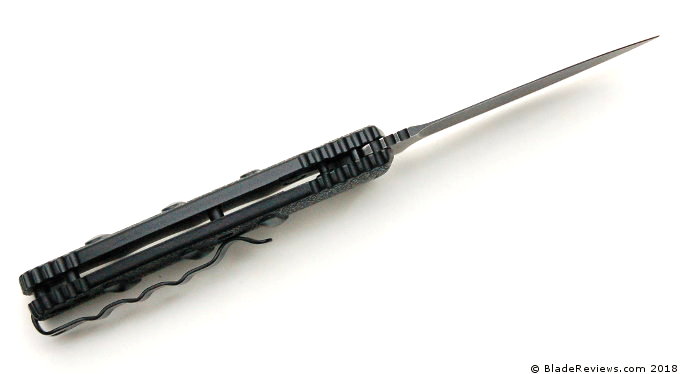
Deployment and Lockup
The Kalashnikov is a coil spring automatic. To release the blade you depress the button. Very simple and effective. The spring action is excellent and the blade slams open with a loud smack. No complaints in the deployment department.

For lockup we have a button lock. This setup is just like the Microtech Stich, although everything done has been on a much smaller scale. Lockup is tight, but I detect a slight amount of side to side play when I pull on the blade. Nothing crazy, but it’s there. The lock disengages easily, with no lock stick or binding.
Blade centering is close to perfect on my knife.
Boker Kalashnikov Review – Final Thoughts
I still find the entire premise of the knife to be slightly goofy, but I’m glad I picked up the Boker Kalashnikov. I think if you are looking for a sturdy automatic folder for $40 or so, then the Kalashnikov is well worth considering. It’s well made and fully functional. I don’t think there is anything else out there that touches it.
I see Smith and Wesson makes a series of “Extreme Ops” autos for $20-30, but I’d bet my bottom set of dentures that they won’t be as good as this AK-74. Kershaw makes a nice series of USA made automatic knives, but these are going to cost you at least twice as much money. Anything by Gerber or Benchmade is going to set you back at least $150. So for $40 I’d say this is a nice sweet spot if you are wanting to add an automatic folder to your collection but want to keep the cost below $50.
And the knife works well. It benefits from a simple design, decent materials, and sturdy construction. It cuts well, is reasonably comfortable to use, carries nicely, and has a snappy push button automatic action. There is really nothing wrong with it. I think it represents good value for money given its price. It is easy to see why this knife has sold well over the years and continues to stay in production with a wide variety of different configurations.
Does it impress me like the $400 Stitch? Not really. But it’s still a good knife for the money. Recommended for a sub $50 auto.
Boker Kalashnikov – From $39.95
From: BladeHQ
I recommend purchasing the Boker Kalashnikov at BladeHQ. Please consider that buying anything through any of the links on this website (including Amazon) helps support BladeReviews.com, and keeps the site going. As always, any and all support is greatly appreciated. Thank you very much.
